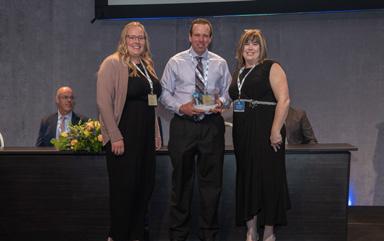
1 minute read
ELLIOTTDALE HOLSTEINS LTD.
Andrew and Nicole Elliott | John and Yvonne Elliott
Q& A
1. What steps do you take to ensure consistent, highquality milk production on your farm?
When we milked 77 cows in the tie stall barn, cows were stalled on pasture mats and straw, and went outside for exercise and to eat at the bunk. We moved into a new, sand-bedded, free stall barn in November of 2019 and we continue to practice many of the same protocols. Dry cows also spend their dry period on sand bedding. We use mostly EastGen semen as we like the dairy qualities it brings to the herd. Milking equipment is maintained yearly and we continually monitor our practices and protocols with assistance from our veterinary team and nutritionist.

2. What is the most important factor that influences milk quality on-farm?
Recognizing that there are many factors that influence milk quality from bedding, constant quality feed, constant review of health protocols and practices. Quality milk starts from birth, raising healthy calves, breeding when ready, maximizing feed intake and supporting the cow throughout her milk cycle.
3. What does this award mean to you?
We were surprised and honoured to receive this award. We received it about a year after moving into our new barn and it has helped confirm that we made a great decision upgrading our facilities and that the time we spent researching and visiting similar farms was worthwhile.

“I have been visiting Elliotdale Holsteins for many years. In their old tie stall barn, they worked hard to ensure the highest quality milk as they do now in their new, parlour/free-stall barn. It is easy to see John, Yvonne, Andrew, and Nicole take great pride in their farm and their animals and are very deserving of this award.” —Emily McDonald, Manager Field Service and Raw Milk Quality Programs
4. What else do you want people to know about your farm?
We have helped with the “Good Neighbour Project” for 28 years. The project has rented a 24-acre field and grown a crop rotation of wheat, corn and soybeans. The income from the crop is sent to the Canadian Foodgrains Bank in Winnipeg, with the government matching the money we send, four to one. Money is used overseas to assist people who are less fortunate than us.






